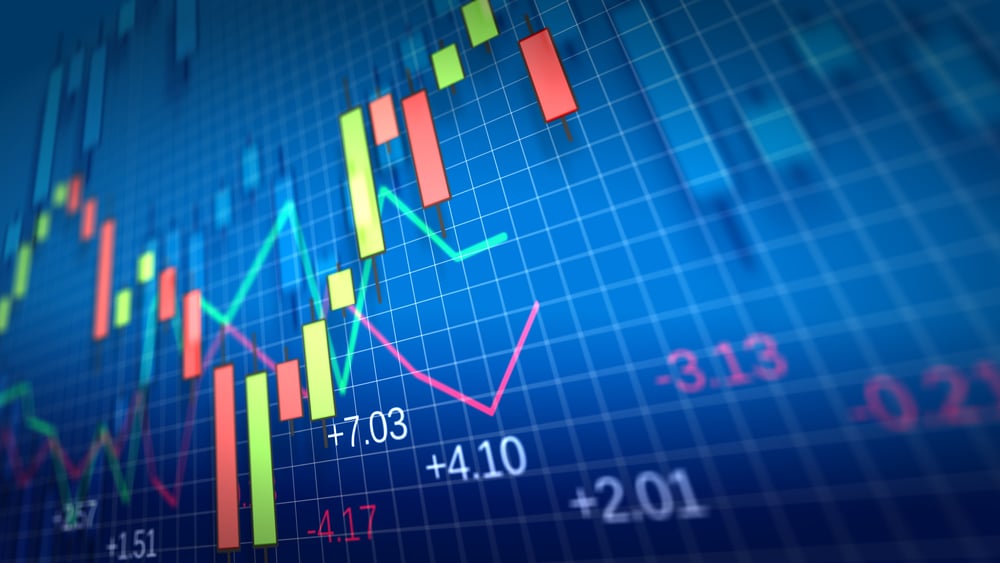
Having a solid grasp of technical analysis and charting is always an important component to becoming a successful trader. Without the ability to interpret price action and trends on a chart, you will have a hard time developing any sort of system or strategy that is based on technical analysis. Many of the most successful traders are very skilled in pattern recognition and identifying setups based on price action alone. These are skills that require practice and patience as you work hard to develop them.
Some of the most common and easily recognizable chart patterns that traders keep an eye out for are inside and outside days. These patterns help us recognize volatility and potential continuation in the price trend of a security. They are terms that are commonly used by technical traders and swing traders who are trying to predict where the price of a security will go in the coming days or weeks. Let’s take a more detailed look at inside and outside days below to gain a better understanding of how they can benefit our trading decisions.
Inside Day – Continuation on the Way?
An inside day is a two-bar pattern that occurs when the entire daily price range of a security falls within, or inside, of the price range of the previous day. It can mean a few things, such as indecision since the buyers and sellers weren’t able to drive the price above or below the previous day’s range. If you want to find inside days on a chart, you need to understand price action and candlesticks. Pull up the chart of a given security and look at the daily chart. You are looking for a candle that opens and closes within the range of the previous day’s candle. It doesn’t necessarily matter if the inside day candle is red or green, as long as it is within yesterday’s range. As a side note, inside days can also be found on intraday, weekly, and monthly charts in addition to the daily chart.
Inside day candles can mean several different things. They can signify to traders that the market is waiting a bit to determine the direction of the trend. It can also mean that continuation will occur for the recent trend. On the other hand, there are situations in which an inside day might mean that the trend is reversing. This is most often the case when the stock price has been on a consistent uptrend or downtrend and then subsequently prints an inside day candle on the daily chart. Therefore, a bullish inside day candle means that the close was below the open for the first bar, and a close above the open for the second bar of the pattern. On the other side, a bearish inside day means that the candle closes lower than the opening price on the second day, after the first day’s candle that closed above the open.
Outside Day – Volatility Increasing
Outside days are an easy to recognize chart pattern that has a larger difference in open and closing prices than the previous day did. It is a two-bar pattern that contains an open and a close that create a range which is both above and below the prior day’s range. It also features a higher high and a lower low on the second day when compared to the first bar. On a candlestick chart, you will see a larger candle than the previous day’s candle. It is essentially the opposite of an inside day candle. They occur pretty frequently in trading, so make sure you aren’t making trading decisions based on an outside day candle alone.
An outside day candle can mean several different things. In a general sense, and outside day candle means that volatility is increasing thanks to the larger range of prices than the previous day. It can lead to an outside reversal, which means that the price bars are moving in opposite directions. Make sure you are keeping the overall trend of the market and the price of the security in mind when you are making decisions based on an outside day candle.
Both inside day and outside day candles can help you out in day trading or swing trading. Hopefully, this article helps you to gain a better understanding of what they are and what they might mean for a security’s price going forward. Remember that you can’t always rely on past price movements to indicate the future trend of a stock.
Before you make your next trade, you'll want to hear this.
MarketBeat keeps track of Wall Street's top-rated and best performing research analysts and the stocks they recommend to their clients on a daily basis.
Our team has identified the five stocks that top analysts are quietly whispering to their clients to buy now before the broader market catches on... and none of the big name stocks were on the list.
They believe these five stocks are the five best companies for investors to buy now...
See The Five Stocks Here
Discover the top 7 AI stocks to invest in right now. This exclusive report highlights the companies leading the AI revolution and shaping the future of technology in 2025.
Get This Free Report
Like this article? Share it with a colleague.
Link copied to clipboard.
